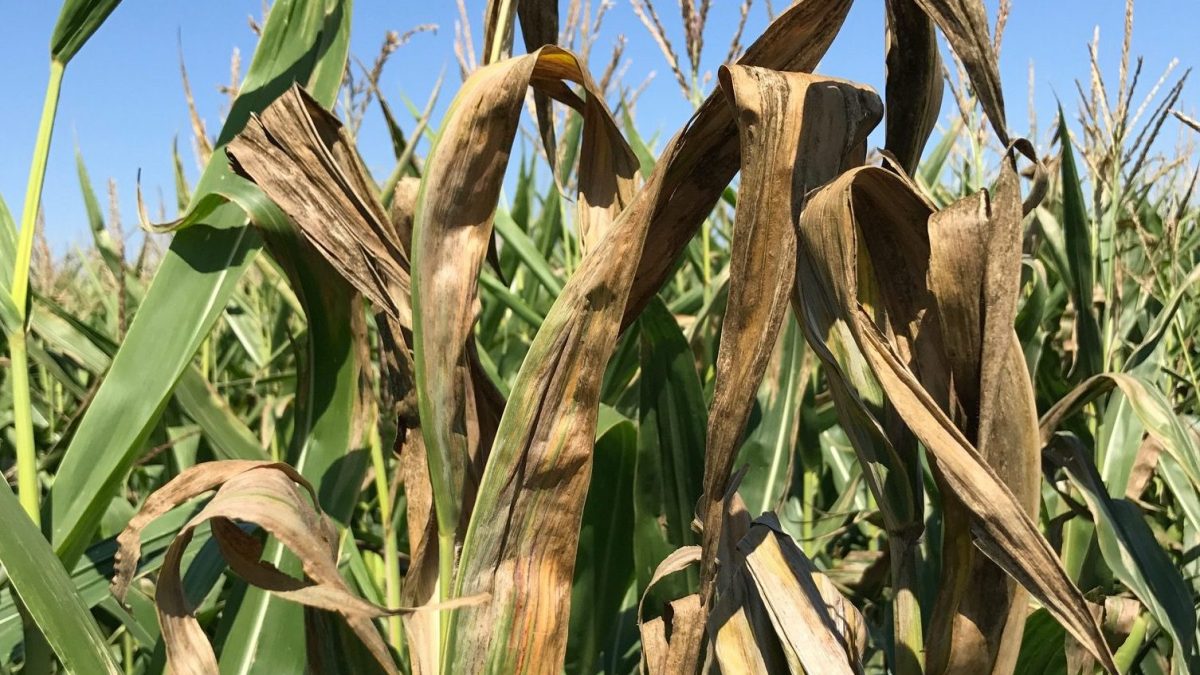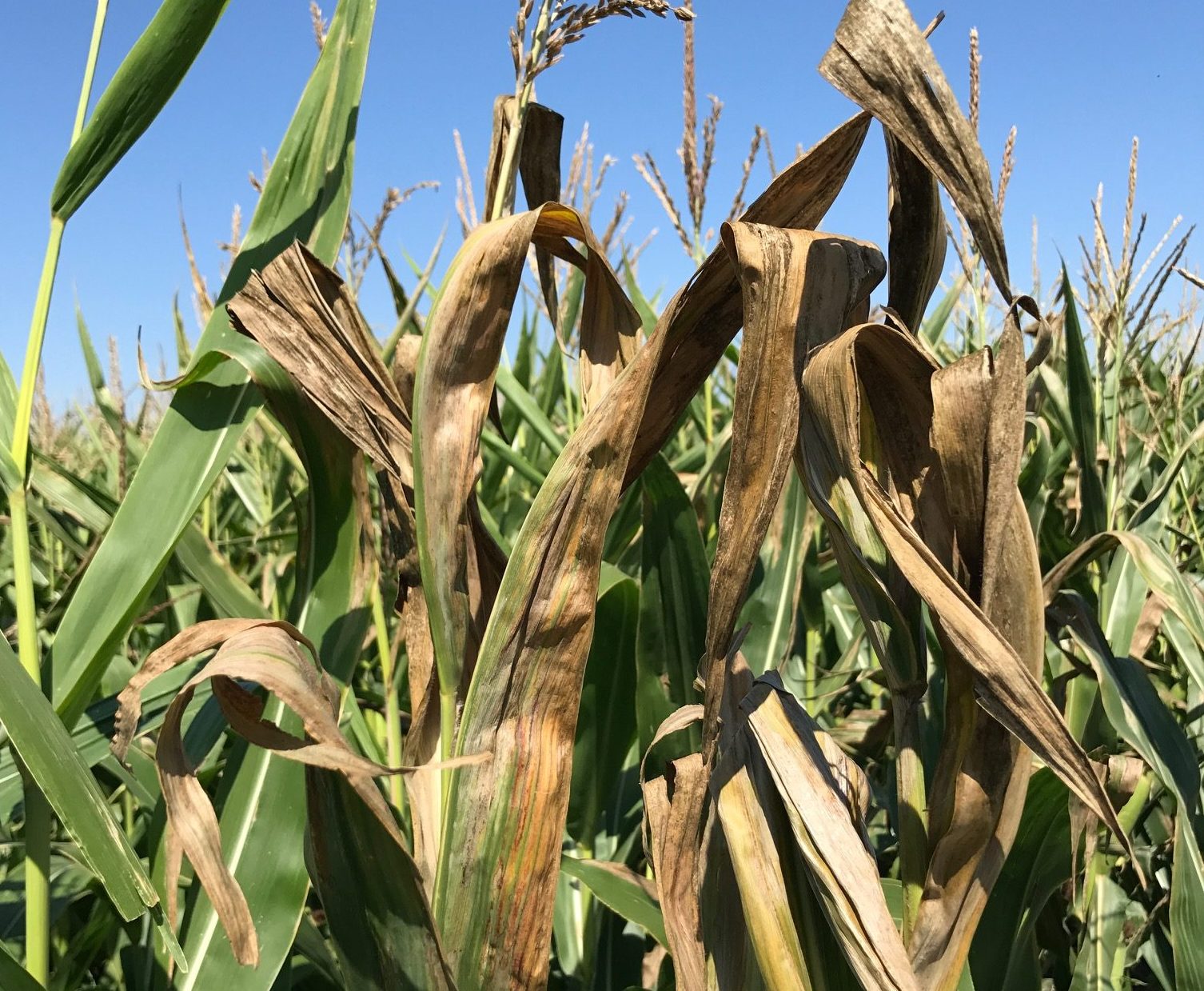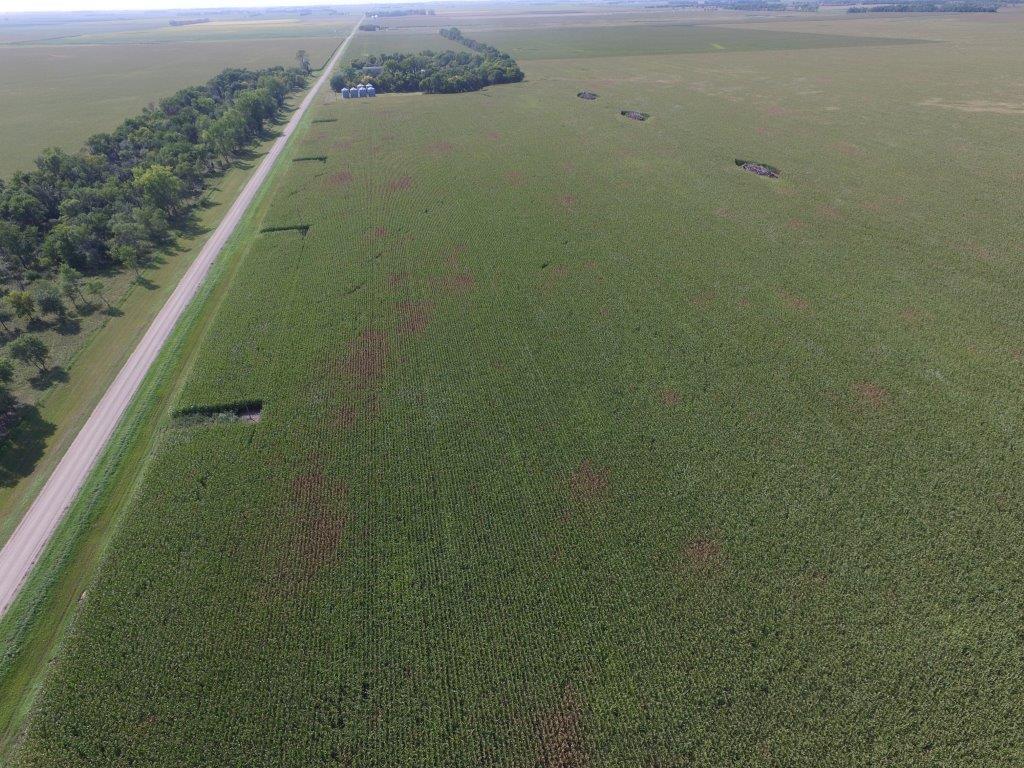How to Prevent Goss’s Wilt Next Year

2017 has been an interesting year thus far with challenges throughout the growing season. One disease that is raising some questions is Goss’s Wilt. Goss’s Wilt has been found throughout the corn belt for a few decades but it is starting to become a larger issue across North Dakota, South Dakota, and western Minnesota.
A corn plant can show two different symptoms of Goss’s Wilt: systemic plant wilt and leaf blight. Leaf blight is most commonly observed with initial symptoms of what looks like dark green or black water-soaked spots on the leaf, commonly referred to as freckling. As the disease progresses, the bacteria on the leaf will ooze, leaving a shiny varnished look after it has dried. Later, oblong sections of dead plant tissue will be observed on the leaf.

The disease can also infect the vascular tissue and move systemically throughout the plant, but this is less common in the north. A systemic infection is identified by splitting the stalk and observing vascular discoloration or stalk rot. A systemic infection of Goss’s Wilt will more than likely lead to plant death.
Goss’s Wilt survives and overwinters on corn residue which is why it is often found in fields that are corn following corn. Goss’s will infect the plant through an open wound anywhere on the plant. These wounds often are caused by hail and high winds.
Scouting should be done throughout the growing season and monitored closely if the disease is discovered. Once confirmed, using a drone is useful to assess the severity and size of the affected area. It is easy to see the brown, infected areas from above to help determine how many acres are affected.

Using a drone to spot brown patches is an effective way to assess the spread of Goss’s Wilt.
Fungicides provide very little help fighting Goss’s Wilt. If found in a field, there is little that can be done to manage the disease in the current growing season. It is, however, critical to begin making decisions for the following year.
The first decision that can greatly reduce the presence of the disease next year is to rotate to a non-host crop such as soybeans or edible beans. If you do plan to rotate be sure to remember that neighboring fields can be greatly affected due to infected corn residue blowing and moving to adjacent fields.
Good tillage practices (plowing is most effective) will reduce the presence of the disease in years to follow. Burying the infected crop residue minimizes the potential for disease survival and infection the following year.
The third, and, in my opinion, most important decision when planning for next year is selecting corn hybrids with high tolerance to Goss’s Wilt. Our corn genetics selection team places a very high priority on choosing products that are tolerant to Goss’s Wilt. In fact, every new cross in our lineup has good to very good ratings.
Goss’s Wilt is a bacterial disease so cultural practices and hybrid selection are critical for control, as in-season fungicides are ineffective. By being diligent with your farming practices, rotations, and scouting, winning the fight against this disease can be easier. And, as always, if you suspect that Goss’s Wilt is present in any of your fields, please feel free to contact any of us at Peterson Farms Seed to come and take a look.



